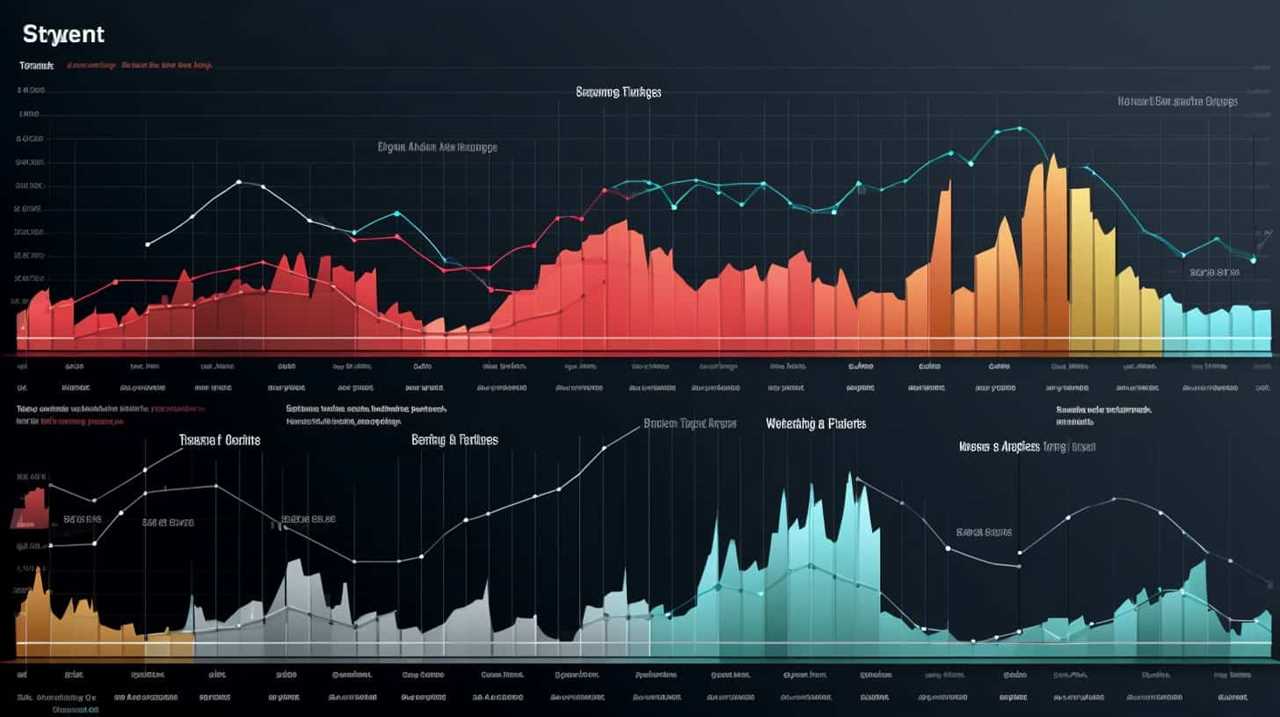Everyone knows about SEO, but how much attention have we truly paid to technical SEO? It acts as the invisible infrastructure that keeps a website running smoothly and efficiently.
From website speed and performance to mobile optimization and crawlability, technical SEO plays a crucial role in improving search engine rankings.
In this article, we’ll delve into the importance of technical SEO and how optimizing your site’s structure can lead to greater online visibility.
So, let’s dive in and master the art of technical SEO together.

Key Takeaways
- Technical SEO is important for improving website performance and visibility in search engine rankings.
- Mobile optimization is crucial for technical SEO as it affects user experience and is a ranking factor.
- Implementing technical SEO best practices, such as optimizing page load times and website speed, can increase organic traffic and improve rankings.
- Having a well-structured website architecture, including clear URLs and a clear hierarchy between pages, helps search engines navigate and understand the content, leading to better search engine visibility.
Importance of Technical SEO
The importance of technical SEO can’t be overstated in improving our website’s performance and visibility in search engine rankings. Technical SEO techniques and strategies play a crucial role in ensuring that our website is optimized for search engines to crawl, index, and understand its content effectively.
By implementing technical SEO best practices, we can ensure that search engines can easily navigate and interpret our website, leading to higher visibility in search results. This includes optimizing our website’s structure, improving page loading speed, and making sure our URLs are search engine friendly.
Technical SEO also involves optimizing our website for mobile devices, as mobile-friendliness is a key ranking factor. By implementing these technical SEO strategies, we can enhance our website’s performance, increase organic traffic, and ultimately achieve higher rankings in search engine results pages.
Website Speed and Performance
Improving website speed and performance is crucial for optimizing technical SEO.

When it comes to website speed and performance, there are several key factors to consider:
- Page load time: A slow-loading website can lead to a poor user experience and high bounce rates. Optimizing page load time is essential for retaining visitors and improving user experience.
- Mobile optimization: With the rise of mobile devices, it’s important to ensure your website is optimized for mobile. This includes responsive design, fast loading times, and smooth navigation.
- Optimizing images: Large and uncompressed images can significantly slow down your website. Optimizing images by compressing them without sacrificing quality can greatly improve load times.
- Minimizing HTTP requests: The more HTTP requests your website makes, the longer it takes to load. Minimizing these requests by combining files, reducing scripts, and optimizing code can boost website speed.
- Caching: Implementing caching techniques can store frequently accessed data, reducing the need for repeated requests and improving overall website performance.
Mobile Optimization for SEO
To further enhance technical SEO, we need to address the importance of optimizing mobile experience. In today’s digital landscape, mobile devices have become the primary means of accessing the internet. As a result, having a responsive design that adapts to different screen sizes is crucial for providing a seamless user experience.
Responsive design ensures that your website looks and functions well on smartphones and tablets, improving user engagement and reducing bounce rates. It also plays a significant role in improving your website’s visibility in search engine results, as Google prioritizes mobile-friendly websites in its rankings. By optimizing your website for mobile, you not only enhance the user experience but also increase your chances of being discovered by potential customers.
Now, let’s delve into the next section about crawlability and indexability.

Crawlability and Indexability
Now that we’ve addressed the importance of optimizing mobile experience, let’s explore how crawlability and indexability play a crucial role in technical SEO.
- Website architecture: A well-structured website allows search engines to easily navigate and understand your content.
- XML sitemaps: These files provide search engines with a blueprint of your website’s structure and help them discover and index your pages more efficiently.
- Efficient crawling: Ensuring that search engine bots can crawl your website quickly and easily helps improve your site’s visibility and indexability.
- Indexation management: Monitoring and managing the indexation of your web pages helps prevent duplicate content issues and ensures that only relevant pages are included in search engine results.
- Technical SEO audits: Regular audits of your website’s crawlability and indexability can uncover potential issues and help optimize your site for better search engine visibility.
Optimizing Site Structure for SEO
After addressing the importance of crawlability and indexability in technical SEO, we’ll now delve into optimizing site structure for SEO.
Site structure, also known as site architecture, plays a crucial role in improving search engine rankings and user experience. A well-organized site structure helps search engines understand the hierarchy and relationship between different pages on your website. This, in turn, makes it easier for search engines to crawl and index your site.
When optimizing your site structure, it’s essential to focus on creating SEO-friendly URLs. SEO-friendly URLs should be short, descriptive, and include relevant keywords. They should also be easy for users to read and understand. By incorporating keywords into your URLs, you can improve the visibility of your website in search engine results pages (SERPs) and attract more organic traffic.

Remember to keep your URLs consistent and avoid using special characters or unnecessary parameters that may confuse search engines. A well-optimized site structure with SEO-friendly URLs is a critical component of any successful SEO strategy.
Frequently Asked Questions
How Does Technical SEO Differ From Other Types of SEO?
When it comes to SEO, technical SEO stands apart from other types like content SEO.
Technical SEO focuses on the technical aspects of a website, such as site speed, mobile optimization, and crawlability. It ensures that search engines can easily access and understand your website, improving your chances of ranking higher in search results.
While content SEO focuses on creating high-quality, relevant content, technical SEO is equally important in optimizing your website for search engines and attracting organic traffic.

What Are Some Common Technical SEO Issues That Can Negatively Impact Website Rankings?
Common technical SEO issues can have a negative impact on website rankings.
These issues can include:
- Slow page loading times
- Broken links
- Duplicate content
- Improper use of header tags
When these issues aren’t addressed, search engines may struggle to crawl and index your website properly, resulting in lower search rankings.
It’s important to regularly audit your website for these common technical SEO issues and fix them promptly to maintain optimal website performance and rankings.

Are There Any Specific Technical SEO Considerations for E-Commerce Websites?
There are indeed specific technical SEO considerations for e-commerce websites.
When it comes to e-commerce SEO, optimizing product pages, implementing structured data markup, and ensuring fast page load speeds are crucial.
Additionally, having a mobile-friendly website and utilizing technical SEO tools such as crawlability and indexability analysis can greatly improve search engine rankings.
How Can Website Owners Ensure Their Websites Are Mobile-Friendly for Better Seo?
Improving user experience and ensuring mobile responsiveness are crucial for better SEO. Website owners can achieve this by implementing responsive design, optimizing page load speed, and using mobile-friendly navigation.

By implementing responsive design, website owners can ensure that their website adapts to different screen sizes and devices. This means that users can easily access and navigate the website on their mobile devices, improving their overall experience.
Optimizing page load speed is another important factor in improving user experience. Slow-loading websites can frustrate users and lead to higher bounce rates. By optimizing page load speed, website owners can provide a faster and more seamless browsing experience for their mobile users.
Using mobile-friendly navigation is also essential for a positive user experience on mobile devices. Mobile-friendly navigation menus are designed to be easily clickable and scrollable, making it easier for users to navigate through the website.
What Are Some Best Practices for Optimizing Site Structure for Search Engines?
When it comes to optimizing our website for search engines, we know the importance of having a solid site structure and URL architecture.

By organizing our website in a logical and user-friendly way, we can make it easier for search engines to crawl and index our pages.
This means using clear and descriptive URLs, creating a hierarchy of pages, and utilizing internal linking.
These best practices not only improve our SEO, but also enhance the overall user experience.
Conclusion
In conclusion, technical SEO plays a crucial role in optimizing websites for better performance and visibility. By focusing on website speed, mobile optimization, crawlability, and site structure, businesses can improve their online presence and attract more organic traffic.

Ignoring these technical aspects can result in a poor user experience, decreased search engine rankings, and missed opportunities for growth. It’s essential to prioritize technical SEO to ensure a successful online presence and stay ahead of the competition.










